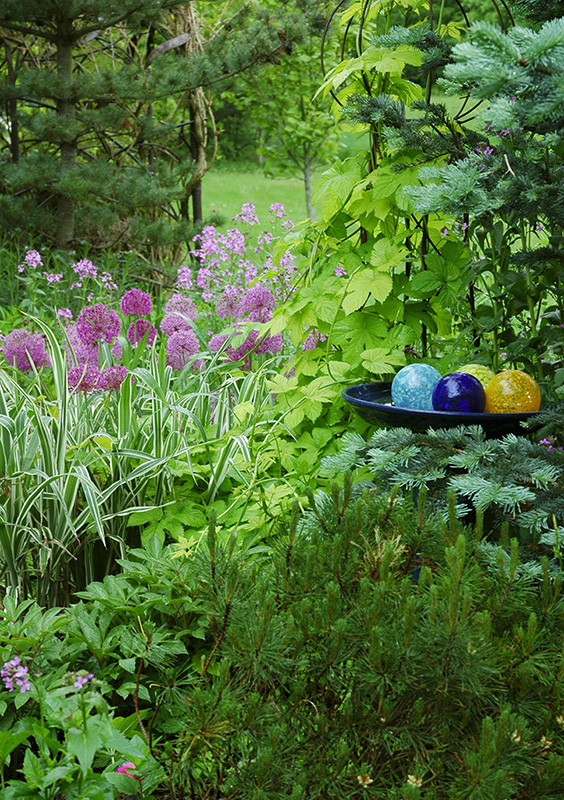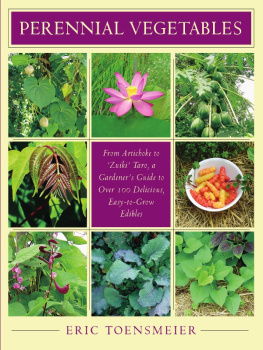
TRACY DISABATO-AUST
THE WELL-TENDED PERENNIAL GARDEN
THE ESSENTIAL GUIDE TO PLANTING AND PRUNING TECHNIQUES
A Bestselling Classic, Completely Revised and Expanded
Timber Press
Portland, Oregon
To my family, Team Austome: Jim, Zach, and Alyssa.
Love you forever, love you for always.

Summer vignette from the back gardens at Hiddenhaven. Gateway Joe Pye weed (Eutrochium maculatum Gateway) and Herbstonne coneflower (Rudbeckia nitida Herbstonne) were guinea pigs to test pre-emptive pruning (pruning prior to flowering) for height reduction and reduced need for staking.
CONTENTS

Lenten rose (Helleborushybridus) is not just another pretty face in the perennial garden. It is long-lived, tolerant of heat and humidity, hardy in cold and drought, deer resistant, and free of pests and disease. It also requires minimal pruning and feeding and no staking.

Spring at Hiddenhaven means fresh new growth on conifers and perennials. Colorful glass bobbles draw the eye, repeat the form of the ornamental onions (Allium aflatunese Purple Sensation), and look great all season. Art in the garden requires minimal to no maintenance.
Preface
We are thrilled to offer this information-packed, beautiful, and inspiring third edition of The Well-Tended Perennial Garden! In an effort to stay topical in the rapidly changing world of perennial gardening, we felt an update to the original edition from 1998 (thats rightcan you believe it?) and the expanded edition from 2006 was in order.
Exciting changes to this edition include more than 50 new plant encyclopedia entries, dozens of new cultivars, scores of new photographs and illustrations, updates to some of my original garden design projects, and visual stories of new design projects. If you have the previous two editions of Well-Tended Perennial Garden you will also appreciate the updated Perennials by Maintenance Needs, which has been expanded in this third edition.
New perennials are being introduced daily and its hard to keep up! Our goal isnt to provide every new perennial or cultivar (these are well covered in other publications), but to address these new plants from a maintenance perspective, which is a viewpoint unique to this book. What are the care, and more specifically, pruning, needs of these plants? Which cultivars are more reliable, hardier, or long-lived performers? Which ones have I used for years that still pass the test of a great plant?
Working in the horticulture industry for 4 decades now, Ive seen many changes. I have always used native plants in my designs, but the emphasis on their use is even greater today. Perennials are being incorporated into rain gardens, rooftop gardens, container gardens, and mixed gardens. They are joining trees, shrubs, bulbs, annuals, and vegetables in the garden, rather than being strictly relegated to traditional perennial beds. There is the desire to grow dynamic yet low-maintenance plants that are deer resistant and drought tolerant, that dont require frequent pruning or care to look their best. Many new, safe organic fertilizers and pest controls are readily available. We address these issues here.
Thankfully, many of the sound horticultural practices that were discussed in the books first edition still hold true today; you will find they remain in these pages, both in recommendations and in the examples of featured gardens.
Thank you for supporting this book and its mission all these years. Besides being one of the all-time bestselling and most-sustaining gardening publications available since it was first released, The Well-Tended Perennial Garden has been one of the most rewarding and cherished aspects of my career.
Todays world is hectic and filled with technology. People rarely look up from their cell phones or digital devices. We desperately need to fuel our souls, and an excellent way to do so is by connecting with plants and the earth through gardening. May this refreshed, more-relevant-than-ever guide help you navigate a joyful perennial gardening journey.

A well-tended garden need not be rigid. The arbor entrance to the back gardens at Hiddenhaven is welcoming and free spirited, with just the right amount of openness to allow access.
BASIC PERENNIAL GARDEN PLANTING & MAINTENANCE

You will be rewarded manyfold for your time and effort to maintain a perennial garden, as shown here at Hiddenhaven in midsummer.
Design and Its Relationship to Maintenance
The amount of maintenance a garden requires depends precisely on how the garden was designed or planned. The chosen setting, style, size, and shape of the garden as well as the plant selection, arrangement, and spacing all intertwine to determine the type of care needed. Questions to be asked before the design stage include: How much time and money can be devoted to the upkeep? Who is going to do the maintenancethe owner, a professional crew, or a combination of the two? Whoever is doing it, do they know how to care for the plants chosen? Even the best-designed garden never lives up to what its creator visualized if it is poorly maintained.
There is no question that the planning stage of any perennial garden is thrilling; there are so many great plants from which to choose. The fact that many perennials require maintenance to one degree or another is usually overlooked at this stage, placed far away in the back of ones mind behind all the fantastic colors, cut bouquets, butterflies, fragrance, and other anticipated attractions. Such selective memory is not just the province of beginners; this thinking is true of my mindset as well when Im planning gardens. Nonetheless, I dont feel that a garden should be planned solely around the premise of maintenancethis would be too limiting and inhibiting. I do believe in a balance, however, and this balance is going to be different for different people. For some, gardening 4 hours a week constitutes low maintenance; for others, anything over 30 minutes moves into the high-maintenance category. (Based on a 9-month period, I average 16 to 20 hours of gardening each month in my own garden, Hiddenhaven, which is about 4600 sq. ft.of course certain months see more work than others.) Still, some gardeners are willing to invest time for maintenance in the spring, but prefer a golf club or a tennis racket to a pair of pruners in the summer. Such preferences need to be considered during the planning stages. For practical purposes well make the mid-maintenance garden the one to strive for in this book. Even better, lets not think of it as maintenance but as gardening! How much gardening are you or your clients willing to do?
Next page














